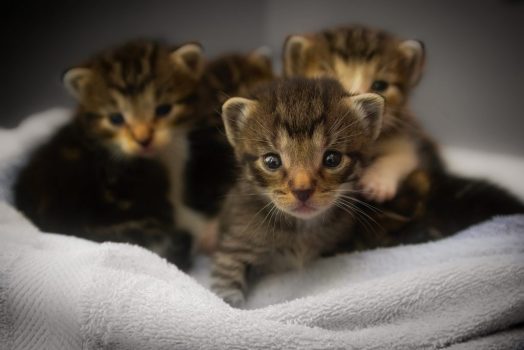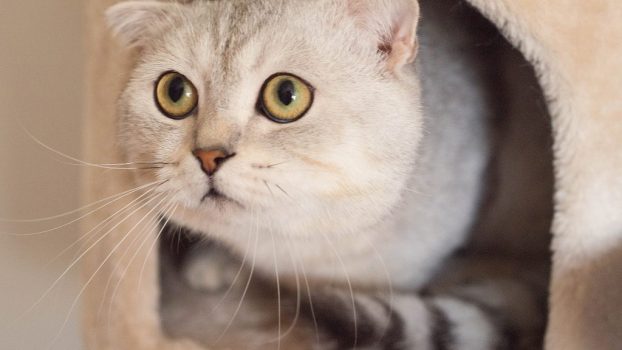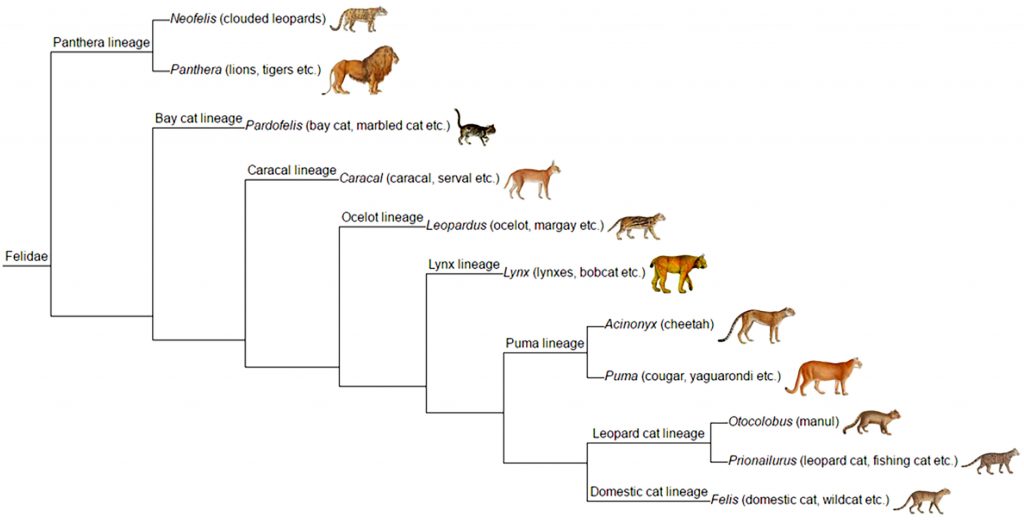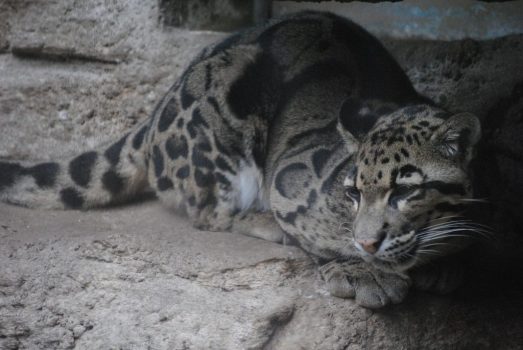
Cats
Cats
Cat species have characteristics and behaviors that make them successful predators, but also put them at risk when habitats are altered.
Learning Objective: Describe the genetics, evolution, predatory and prey response behaviors of wild and domesticated cats.

Similar to dogs, cats have become a significant part of human culture.
Watch this video; you can select the closed captioning “cc” option if you would like to see the text.

Although domesticated cats have been primarily used to control rodent populations, artificial selection is accelerating and producing a variety of cat breeds.
Since cats have not been bred as extensively as dogs, they retain many of their predatory characteristics.
Tanji and Vladi demonstrate speed and weaponry.
The ancestors of domesticated cats were small cat species that were preyed upon by larger cat species.
Pet cats can easily startle and hide, their ancestors were not the “top predators” in their food webs.

All cats, small and large, are classified in Family Felidae with several shared characteristics.
Slender & Muscular
Retractable Claws
Strong Jaws
Camouflage
This tiger has all of the classic cat characteristics: sleek body with camouflage colors and pattern; a powerful jaw and huge claws.

Reading this phylogenetic tree, domesticated cats are more closely related to leopard cats than lynx and are distantly related from the ________________ which includes lions and tigers.

Cats have to eat meat, and often range over large territories to find sufficient food. Increased roadways and decreased habitat size have negatively impacted wild cat populations.
Wild cat species also do not need breed readily in captivity and are expensive to maintain. As a result, many species are likely to go extinct in this century.
Managing wild cat species will require input from multiple fields of study. As large predators at the top of food webs, their energy requirements and land needs put them in direct conflict with humans.











